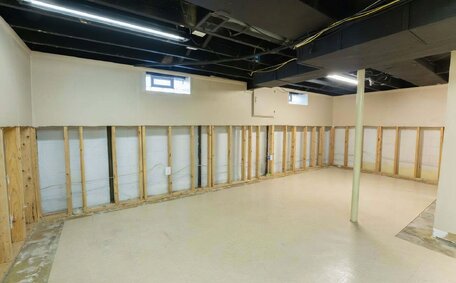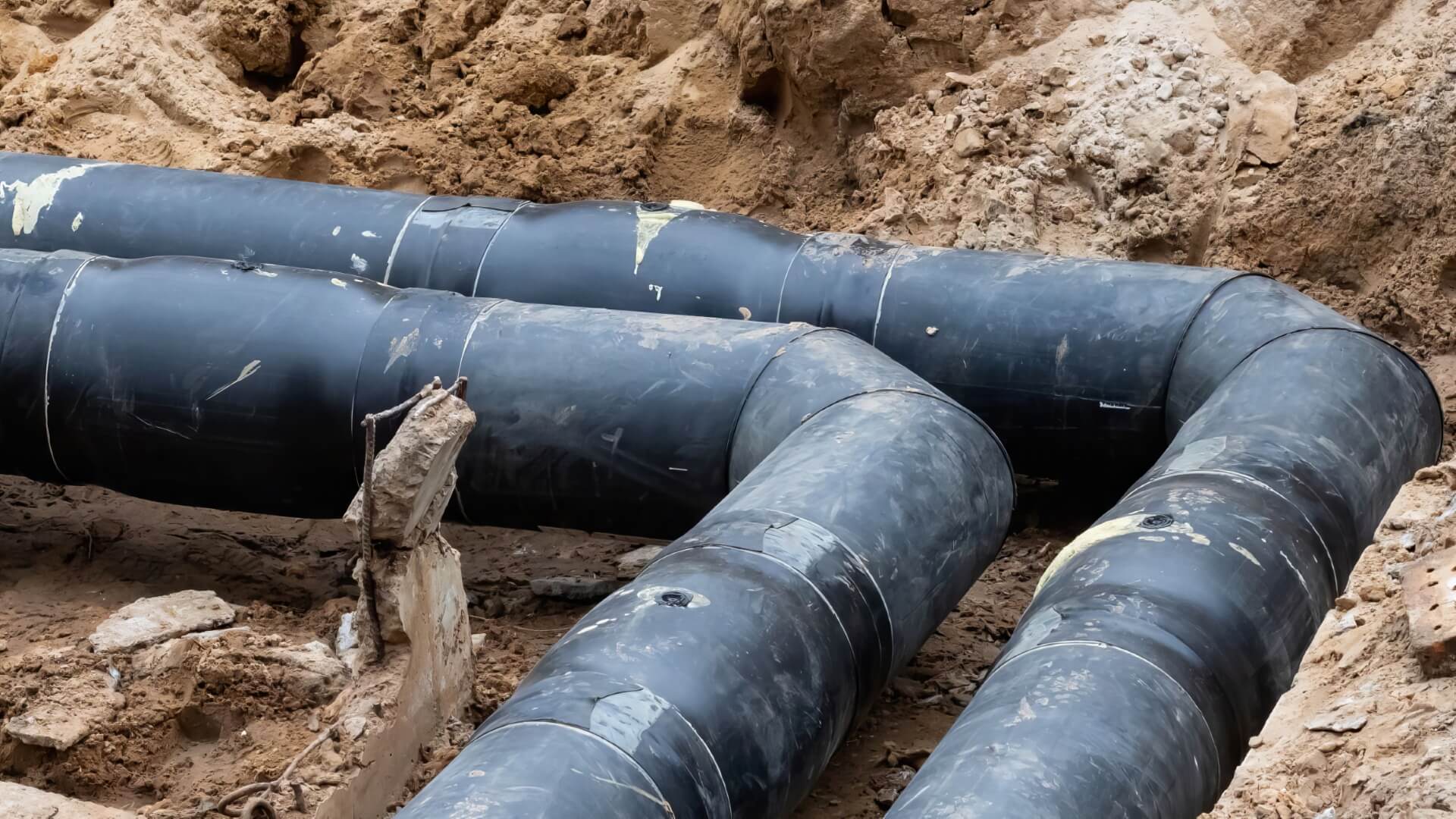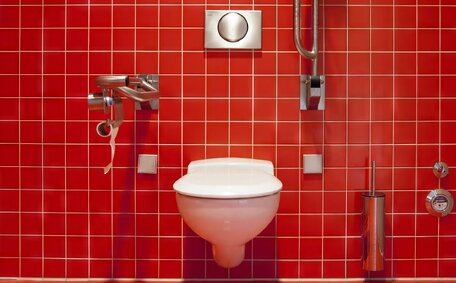Introduction to Gas Pipelines
Gas pipelines are crucial for distributing natural gas from production sites to consumers, powering electricity generation, heating, cooking, and industrial operations. A pipeline’s lifespan is paramount in planning for its maintenance, repair, or replacement.
There are two main types of gas pipelines: transmission and distribution.
Transmission pipelines are large, high pressure systems that carry gas long distances across states and countries. Distribution pipelines deliver gas to end consumers through utility networks in cities and towns. The focus of this guide will be on transmission pipelines transporting natural gas.
The lifespan of a gas pipeline depends on various factors like pipeline materials, construction quality, operating pressures, soil conditions, and maintenance regimes.
Regular inspections, testing and preventative repairs are critical for maximising a pipeline’s lifespan. Eventually, pipelines must be decommissioned due to age. Recognising modern challenges, stakeholders must optimise both value and safety during a pipeline’s life cycle.
Typical Lifespan of a Gas Pipeline
Gas pipelines are typically designed for a lifespan of around 50 years. This lifespan estimation is based on the pipeline meeting stringent construction standards and undergoing appropriate maintenance over its operating life. While individual pipelines may vary, an expectancy of 50 years of safe operation is common across the industry.
The 50-year lifespan is significant to stakeholders including utility companies and regulators, where major investments in pipeline infrastructure aim for maximum operating life to ensure better returns. Replacements entail considerable costs and disruptions, prompting operators to extract maximum value from current assets.
In urban areas like Sydney, a 50-year pipeline lifespan signifies extended periods of secure gas delivery, provided maintenance and upgrades are consistent, with the added assurance of integrity management plans reducing the likelihood of significant failures.
Overall, a typical 50-year lifespan provides a useful yardstick for strategic planning around gas pipeline investments. With proper construction, operation, and maintenance, gas pipelines can safely and reliably transport energy supplies, akin to the iconic Dampier Bunbury pipeline, for communities and businesses for half a century.
Factors Affecting Gas Pipeline Lifespan
Many factors can influence the lifespan of a gas pipeline, determining how long it can operate safely and efficiently before requiring replacement.
Regular maintenance and repairs are critical to maximise lifespan. Techniques like cleaning, corrosion protection, leak surveys, and in-line inspections help detect and prevent issues. Preventative maintenance avoids small problems becoming large failures down the track.
Environmental conditions affect pipelines. Corrosive soils, flooding, ground movement and vibrations from nearby construction can degrade pipelines prematurely. Routes vulnerable to extreme weather require more frequent maintenance.
High operating pressures accelerate fatigue and cracking over time. Exceeding designed capacity strains pipeline components, while pressure fluctuations create stresses. Lower operating pressures extend asset life.
Proper installation is crucial for achieving full lifespan. Poor welds, damage during construction, and inadequate burial depth can introduce defects shortening the safe working life of pipelines.
The lifespan of a gas pipeline depends on appropriate design, materials, construction, operation and maintenance. A diligent asset integrity management programme is essential to realise the full 50-year lifespan modern pipelines are designed for.
Techniques like cleaning, corrosion protection, leak surveys, and in-line inspecpipelines use advanced high-strength steels, with special alloy additions like chromium and nickel to improve strength and corrosion resistance.
Steel is the traditional material used for most transmission pipelines. Early pipelines used lower-grade carbon steels prone to corrosion.
Anti-corrosion coatings are pivotal to pipeline longevity. Early models used simpler coatings like coal tar, while contemporary pipelines benefit from advanced fusion-bonded epoxy and overlays, combatting external corrosion more effectively.
Some gas networks now incorporate high-density polyethylene (HDPE) pipes, providing corrosion resistance for lower pressure systems up to 860 kPa. Additionally, trials with composite fibre-reinforced plastics are underway to further enhance pipeline durability.
Advancements in pipeline materials contribute to the construction of gas pipelines with enhanced integrity, strength, and corrosion resistance, which could potentially extend the standard 50-year design life.
The materials used to construct gas pipelines directly impact their durability and lifespan. Modern pipelines use advanced high-strength steels, with special alloy additions like chromium and nickel to improve strength and corrosion resistance.
Anti-corrosion coatingnow incorporate high-density polyethylene (HDPE) pipes, providing corrosion resistance for lower pressure systems up to 860 kPa.
flow rate. Gas pipelines are created for a specific maximum allowable operating pressure (MAOP), beyond which should not be exceeded, and flow rsset longevity.
Lower pressures reduce fatigue and extend lifespan.
Fluctuating pressures and flows also create issues. Slam shut downs or rapid depressurisation events are especially damaging. Keeping operations steady enhances pipelincity. Engineers strive to balance these elements to optimise both asset lifespan and investment outcomes.
Environmental Conditions
One key factor is soil type. Corrosive soils with high salt content or acidity can rapidly corrode unprotected steel. Careful soil analysis enables pipelines to be coated and cathodically protected against the specific conditions along the route.
Temperature changes, flooding, and geological events can all adversely affect pipeline integrity.
Environmental risks are evaluated during pipeline planning to minimise impacts. Pipelines may be rerouted to avoid corrosive or geologically unstable areas. Operators implement monitoring and maintenance plans tailored to the climate and terrain.
Effective management strategies can mitigate environmental impact, enabling pipelines to reach their full designed lifespan.
One key factor is soil type.
Maintenance and Safety Practices
Leak monitoring, flow rate analysis, and pressure sensors help detect potential defects before they lead to failures. Small leaks and anomalies can be repaired before growing into hazardous ruptures.
Right-of-way maintenance involves managing vegetation and access. Keeping growth away from pipelines prevents root damage and allows aerial surveillance. Security protocols restrict third-party construction or digging near pipelines.
Persisting maintenance and vigilance can keep ageing pipelines operational well beyond initial longevity estimates, yet eventual replacement is inevitable when repairs can no longer keep up with deterioration.
Leak monitoring, flow rate analysis, and pressure sensors help detect potential defects before they lead to failures.
Right-of-way maintenance involves ma
Intelligent pigging tools, equipped with sensors, are essential for inspections, running through the pipeline to detect corrosion, cracks, and other issues, assessing wall thickness, and conducting ultrasound or magnetic flux measurements.
Extehe right-of-way. Aerial and foot patrols regularly survey the pipeline route. Surface instruments can detect subsidence or construction activity near the buried pipe.
Ongoing pressure and flow monitoring provides insight into pipeline integrity. Unexpected changes can indicate leaks or blockages requiring investigation. Any anomalies trigger targeted inspections to diagnose the underlying issue.
Pipeline operators consolidate inspection data for a comprehensive integrity assessment, determining the pipeline’s condition and remaining lifespan, which informs maintenance and replacement plans. Rigorous monitoring enables early detection and repair of potential issues to avoid failures.
Intelligent pigging tools, equipped with sensors, are essential for inspections, running througaks, soil movement and third party activities along the right-of-way. Surface instruments can detect subsidence or construction activity near the underlying issue.
Corrosion Protection
Corrosion poses a significant threat to the integrity and lifespan of pipelines. Operators implement various protection methods to extend asset durability.
Protective coatings on the exterior pipeline surface provide the first line of defence against corrosion. Modern 'fusion-bonded epoxy’ and other advanced coatings prevent steel pipelines from contacting corrosive soils.
Cathodic protection systems, using either sacrificial anodes or impressed current, polarise pipelines to impede electrochemical corrosion. Keeping the pipe-to-soil potential within a safeguarded range is crucial.
Internal corrosion is also prevented through gas dehydration, injection of corrosion inhibitors and integrity inspections. By mitigating external and internal corrosion risks, the designed lifespan of a gas pipeline can be achieved.
Leak Monitoring and Repairs
Detecting and repairing leaks is vital for maintaining gas pipeline safety and extending asset life. Pipeline operators use various leak detection strategies to identify even small leaks before they become hazardous.
Sensors along the pipeline detect variations indicative of leaks, instantly notifying control rooms to take corrective action.
Regular patrols and research can employ surveys usk, temporary repairs are made to stabilise the situation. Techniques like composite sleeves and pipe clamps can repair defects without replacement.
The damaged section is then replaced or permanently repaired. Stopping leaks promptly mainta.
Options at End of Pipeline Lifespan
Full pipeline replacement involves installing new pipe along the same route. While costly, this ensures continued safe and reliable gas delivery. Replacement may be deferred if existing pipelines remain fit for service dess demand and competition from new energy sources may tip the scales towards abandonment. However, abandoning capable pipelines sacrifices potential value.
Safety is the top priority. Regulatory compliance also dictates end-of-life management.
Pipelines posing unacceptable public risks require replacement or removal regardless of economics. Optimal lifespan extension balances costs, revenues and obligations to safely deliver energy supplies.
Full pipeline replacement involves installing new pipe along the same route. Replacement may be deferred if existing pipelines remain fit for service despite ageing.
Under abandonment procedures, pipelines past their usable life are purged, sealed and might be either removed or left in-place based on regulations. Afterwards, they are deemed safe and excluded from operation and maintenance.
Economic considerations weigh replacement costs against potential revenue from continued operation. Declining gas demand and competition from new energy sources may tip the scales towards abandonment.
Pipeline Replacement
Pipeline replacement becomes inevitable when safety can no longer be assured due to factors like extensive wall corrosion, repetitive repairs on the same segments, and challenges in conducting inspections from internal fouling.
The replacement process involves routing and constructing an entirely new pipeline alongside the old one. This is a major undertaking needing extensive planning and regulatory approvals before work can begin. Large excavations are required to access and remove the original pipeline once the new line is operational.
For businesses like St Peters Plumbing servicing Sydney households, pipeline replacement works cause service disruptions. Careful management of outages minimises impacts, but some disruption is inevitable. Overall, pipeline replacement sustains the gas supply by installing new infrastructure with an extended 50-year design life.
Abandonment Procedures
When a gas pipeline reaches the end of its usable lifespan, proper abandonment procedures are required to permanently take it out of service. This involves strict processes regulated by authorities like the Pipeline and Hazardous Materials Safety Administration (PHMSA) in the USA.
Decommissioning a pipeline begins with disconnection from active systems, followed by the expulsion of residual gas. The infrastructure is then severed and sealed, ensuring no further gas passage.
Once isolated, the ultimate step in pipeline abandonment is ensuring safety over the long term—which may involve physical removal if mandated by regulators, or leaving it buried.
Pipeline markers above ground are removed to avoid confusion. The abandoned line must pose no risks from future shifting or deterioration.
Abandoned pipelines remain subject to right-of-way restrictions preventing construction or drilling that could damage the inactive pipe. While no longer maintained or monitored, proper abandonment ensures the pipeline remains isolated from the active network and safely out of use after rea the Pipeline and Hazardous Materials Safety Administration (PHMSA) in the USA.
With renewables accounting for over one-quarter of global electricity, competitive pricing of solar and wind is diminishing natural gas’s share, leading to underused gas pipeline assets.
To remain viable, the gas pipeline industry must adapt to the energy transition. Regardless, renewables uptake compels gas pipeline firms to re-examine traditional business models.
Options include repurposing pipelines for hydrogen or carbon capture transportation. Asset lives may need re-evaluation to avoid stranded investments.
For St Peters Plumbing’s Sydney customers, the renewables shift may change gas supply dynamics in the coming decades. While NSW gas infrastructure currently meets demands, renewable policy may alter pipeline investment and retirement timelines. Industry evolution appears inevitable as cleaner energy reshapes Australia’s energy landscape.






